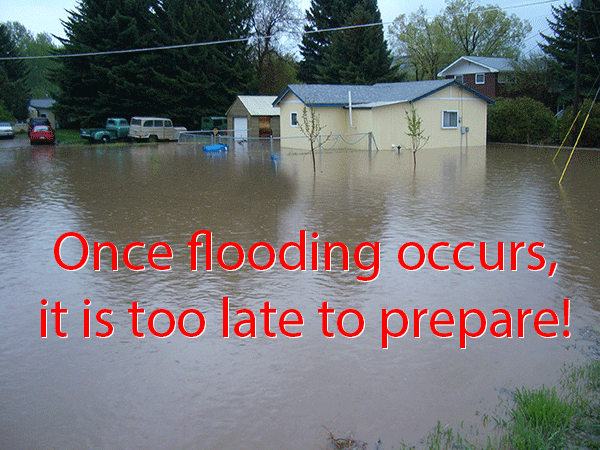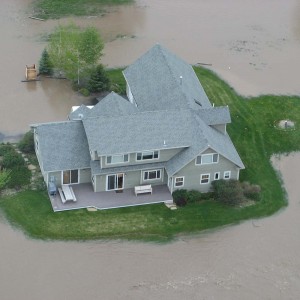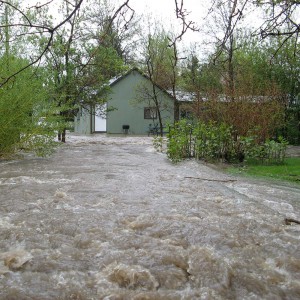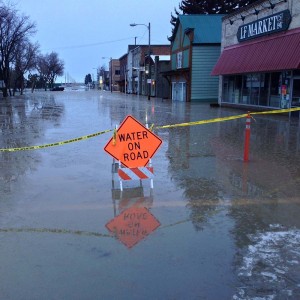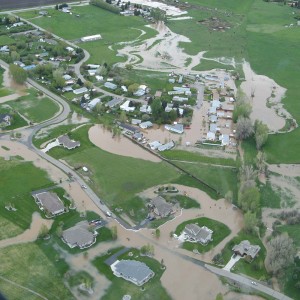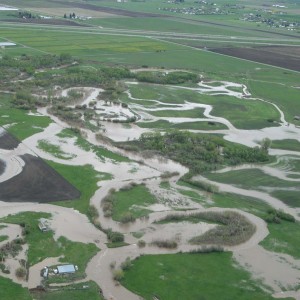Gallatin County has many areas that are subject to flooding throughout the year. Primarily flooding occurs in the winter when rivers become plugged with ice, or in the spring due to rapid snowmelt and/ or rain storms. The conditions which result in flooding can occur quickly and are difficult to conduct long range forecasting for. Typically a little bit of planning ahead of time came make a big difference. The information below will provide you with how you can see current river heights and forecasts, as well as what you can do to prepare your property and families.
What Can I Do to Prepare for a Flooding Event?
First off, residents should ensure that creeks and ditches are clear of debris. Debris in waterways can cause water to back up and overflow sooner that it otherwise would. While removing simple debris is encouraged, residents should keep in mind that some modifications of the waterways may very well require coordination and permits from the Montana Department of Natural Resources and Conservation or your local conservation district.
- Gallatin Conservation District– (406) 522-4011
- Montana DNRC Floodplain Management– (406) 444-6816
- Gallatin County Planning Department– (406) 582-3130
Residents should also consider flood insurance if they live in a flood prone area. Typically, homeowners insurance does not cover damage caused by flooding. Coverage for flooding is available to most people through specific Flood Insurance policies backed by the National Flood Insurance Program. People interested in Flood Insurance should contact their insurance agent for policy information. There is a 30 day waiting period for flood insurance policies to take effect, so don’t waiting until flooding is imminent.
Floodplains
Each jurisdiction participating in the National Flood Insurance Program has a floodplain administrator who is responsible for the program in their jurisdiction.
- Gallatin County (406) 582-3130
- City of Bozeman (406) 582-2280
- Town of Three Forks (406) 285-3431
- City of Belgrade (406) 388-3760
Spring runoff can quickly change from not being an issue to flooding causing great issues. Everyone that lives near waterways, or near areas that have previously seen flooding, should prepare a simple plan of what they will do should they be affected by flooding. Plans can be as simple as what flood fighting supplies are needed, where it will be obtained and utilized, and what you will take and go should evacuation be necessary.
A key issue with flooding to keep in mind is that it changes quickly. Flooding can change from no issue, to a big issue very quickly. When flooding occurs, people in the affected area should keep very close watch on the flooding conditions. It is key to keep in mind that flooding often peaks in the middle of the night catching people off guard when they wake up. Keep your awareness of current conditions up!
Flood Fighting
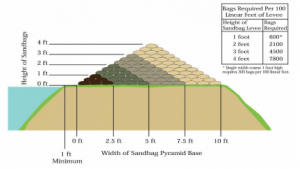 Residents that have flood prone property should consider developing a plan and stocking up with what ever “flood fighting” materials they feel they’ll need ahead of time. These supplies usually consist of material for creating dams and dikes such as sand bags or hay bales rapped in plastic. These supplies are much easier to obtain before an incident, than during a flooding event. They can typically be purchased at hardware and farm supply stores as well as gravel/ brick suppliers (Bozeman Brick, Block and Tile is the only bulk supplier (406) 587-4283). Information on proper use of sand bags is available in these documents:
Residents that have flood prone property should consider developing a plan and stocking up with what ever “flood fighting” materials they feel they’ll need ahead of time. These supplies usually consist of material for creating dams and dikes such as sand bags or hay bales rapped in plastic. These supplies are much easier to obtain before an incident, than during a flooding event. They can typically be purchased at hardware and farm supply stores as well as gravel/ brick suppliers (Bozeman Brick, Block and Tile is the only bulk supplier (406) 587-4283). Information on proper use of sand bags is available in these documents:
| Name | Size | Hits |
|---|---|---|
| Name | Size | Hits |
| Flood Fight Handbook (2009 Version) by US Army Corp of Engineers | 1.0 MB | 1097 |
| Sandbag summary by US Army Corps of Engineers and Santa Cruz County | 0.2 MB | 1317 |
A little time spent developing a plan ahead of time on how you will protect your property can often make a lot of difference. Then don’t hesitate to implement your plan if it looks like flooding will begin. Once flooding occurs, it is often too late to minimize the damage.
As part of your plan make sure you have a “72 Hour Kit” assembled. These kits should contain what you, you family, and pets need to be self sufficient for an extended period of time (at least 3 days).
- East Gallatin River
- Bozeman Creek
- Main St, Manhattan
- East Gallatin River
- East Gallatin River
What Do I Do When Flooding Occurs?
Many hazards appear when flooding begins that may not be seen as dangerous. The community is encouraged to follow these safety guidelines:
- Do Not Walk Through Flowing Water. Drowning is the number one cause of flood deaths. Most occur during flash floods, but only six inches of moving water can knock you off your feet. Use a pole or stick to make sure that the ground is still there before you go through a water filled area where the water is not flowing.
- Do Not Drive Through a Flooded Area. Most people drown in their cars more than anywhere else. Don’t drive around road barriers; the road or bridge may be washed out.
- Stay Away From Power Lines and Electrical Wires. Electrocution is also a major killer in floods. Electrical current can travel through water. Report downed power lines to your utility company.
- Turn Off Your Electricity When You Return Home. Some appliances, such as television sets, can shock you even after they have been unplugged. Don’t use appliances or motors that have gotten wet unless they have been taken apart, cleaned, and dried.
- Watch for Animals, Especially Snakes. Small animals that have been flooded out of their homes may seek shelter in yours. Use a pole or stick to poke and turn items over and scare away small animals.
- Look Before You Step. After a flood, the ground and floors are covered with debris including broken bottles and nails. Floors and stairs that have been covered with mud can be very slippery.
- Be Alert for Gas Leaks. Use a flashlight to inspect for damage. Don’t smoke or use candles, lanterns, or open flames unless you are sure that the gas has been turned off and the area has been aired out. If utilities have been turned off by your provider, you will need to contact them to restore service.
- Carbon Monoxide Exhaust Kills. Use a generator or other gasoline-powered machine outdoors. The same goes for camping stoves. Fumes from charcoal are especially deadly — cook with charcoal only outdoors.
- Clean Everything That Gets Wet. Floodwaters have picked up sewage and chemicals from roads, farms, factories, and storage buildings. Spoiled food and flooded cosmetics and medicines are health hazards. When in doubt, throw them out.
- Take Good Care of Yourself. Recovering from a flood is a big job. It is tough on both the body and the spirit. And the effects a disaster has on you and your family may last a long time. Learn how to recognize and care for anxiety, stress, and fatigue.
After the Flood
Wells
| Name | Size | Version |
|---|---|---|
| Name | Size | Version |
| Emergency Disinfection of Drinking Water | 0.3 MB | |
| Well Inspection and Treatment | 0.4 MB |
Septic Systems
| Name | Size | Version |
|---|---|---|
| Name | Size | Version |
| Septic System During and Following a Flood | 50 KB |
Flood Cleanup
| Name | Size | Version |
|---|---|---|
| Name | Size | Version |
Public Water
| Name | Size | Version |
|---|---|---|
| Name | Size | Version |
| Boil Orders | 31 KB | |
| Surface Water Treatment Plants | 32 KB | |
| Wastewater Treatment Facilities | 0.2 MB |
Current River Information
SNOTEL Sites
Summary SnoTel Charts
Site Specific Data


